*
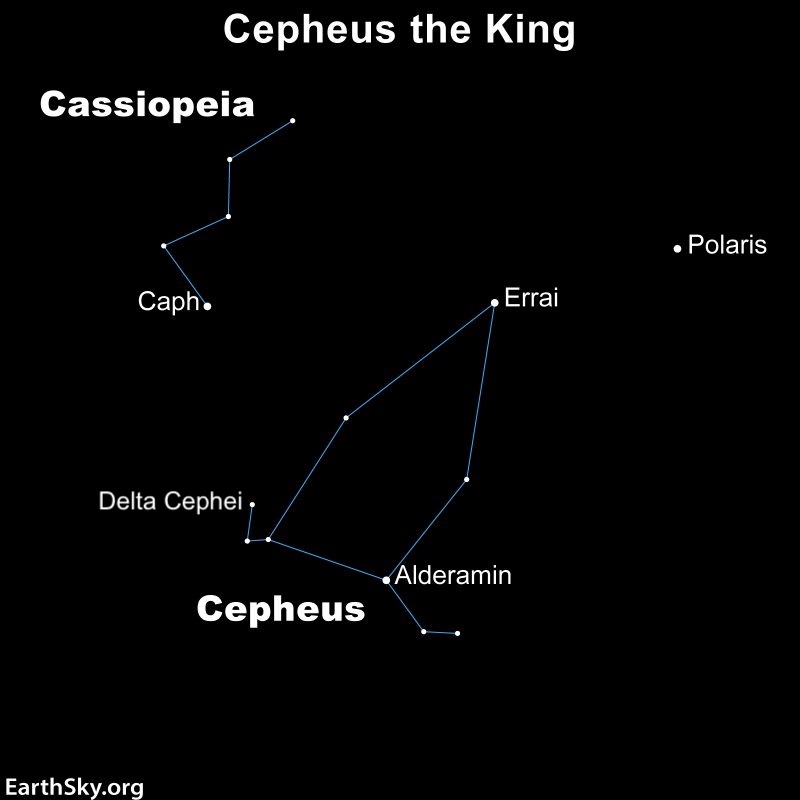
Delta Cephei is a pulsating star
Delta Cephei, in the constellation Cepheus the King, is a variable star that changes in brightness with clock-like precision. In fact, it doubles in brightness and fades back to minimum brightness every 5.366 days. So with careful observation under a dark sky, you can see this star change in brightness over several days. This star, and others like it, are important players in establishing the distance scale of our galaxy … and our universe.
Delta Cephei itself looms large in the history of astronomy. An entire class of supergiant stars – called Cepheid variables – is named in this star’s honor.
#TBT to 1912 when Henrietta Swan Leavitt published ground-breaking observations of Cepheid variable stars. They were key to the discovery by Edwin Hubble that the Andromeda “nebula” is a galaxy like our own Milky Way. Learn more: pic.twitter.com/KXeP6XHgin
— NASA Universe (@NASAUniverse) March 3, 2022
They were discovered by Henrietta Leavitt
Cepheid variable stars, also called Cepheids, dependably change their brightnesses over regular intervals ranging from a few days to a few weeks. In 1912, astronomer Henrietta Leavitt discovered that the star’s periodic change in brightness was directly related to its intrinsic brightness (or actual luminosity). She found that the longer the brightness pulsation cycle, the greater the intrinsic brightness of the star. Sometimes this Cepheid period-luminosity relationship is called the Leavitt law.
Why are these stars varying in brightness? It’s thought that these stars vary because they expand (get brighter) and then contract (get fainter) in a regular way.
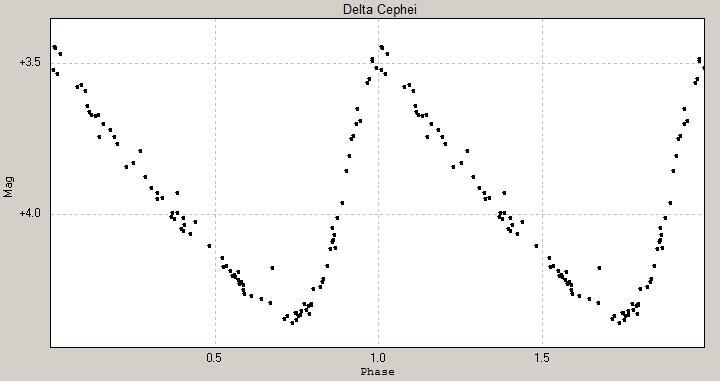
Cepheids help measure cosmic distances
As it happens, the regularity of Cepheids’ brightening and dimming is a powerful tool in astronomy. It lets astronomers probe distances across vast space. Of course, the surest way to measure star distances is with stellar parallax. But, for the parallax method to work with Earth-based telescopes, the stars have to be relatively nearby (within about 300 light-years) of Earth. Luckily, in recent years, astronomers have been able to make direct parallax measurements of more distant stars – up to tens of thousands light-years away – thanks to space-based telescopes such as Gaia.
Still, the problem remains. How can we find the distance to stars that are too far away to give us a reliable distance measurement using parallax? Suppose you measured the distance to a nearby Cepheid star using the parallax method. Then suppose you watched its pulsations, which you know are correlated with the star’s intrinsic – real – brightness. Then you know both its distance and how bright the star looks at that distance.
Armed with this information, you can then look farther out in the universe, toward more distant Cepheids, those too far for parallax measurements. So, you can measure the apparent brightness – which is fainter – and pulsation rate of such a star. With a few simple steps of math, you can then find the distance to it.
Therefore, astronomers use Cepheid variable stars to measure distances across space. For this reason, they’re known as standard candles by astronomers.
Edwin Hubble used Cepheids to expand our known universe
In 1923, the astronomer Edwin Hubble used Cepheids to determine that the then-called Andromeda nebula is actually not a nebula but a giant galaxy lying beyond our Milky Way. It released us from the confines of a single galaxy and gave us the vast universe we know today. This work in understanding the size of the universe is sometimes called the cosmic distance ladder.
And the work continues today, not just with Cepheids but also with other astronomical objects and phenomena.
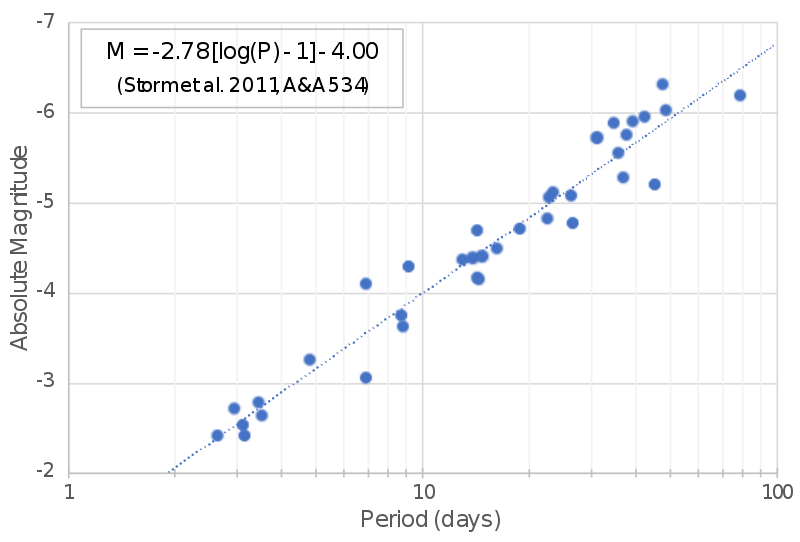
Cepheids in other galaxies
Distance determinations using Cepheids in other galaxies, as well as other techniques, are an active area of research in astronomy. Astronomers are constantly improving distance accuracies to further constrain the value of the Hubble constant that indicates the expansion rate of the universe.
Cepheids have been observed as far away as 100 million light-years in the galaxy NGC 4603, by the Hubble Space Telescope. However, measuring them at distances of 30 million light-years and farther is difficult because it’s hard to isolate Cepheids from their neighboring stars. At such distances, astronomers transition to other methods to determine distances, such as observing type 1a supernovae.
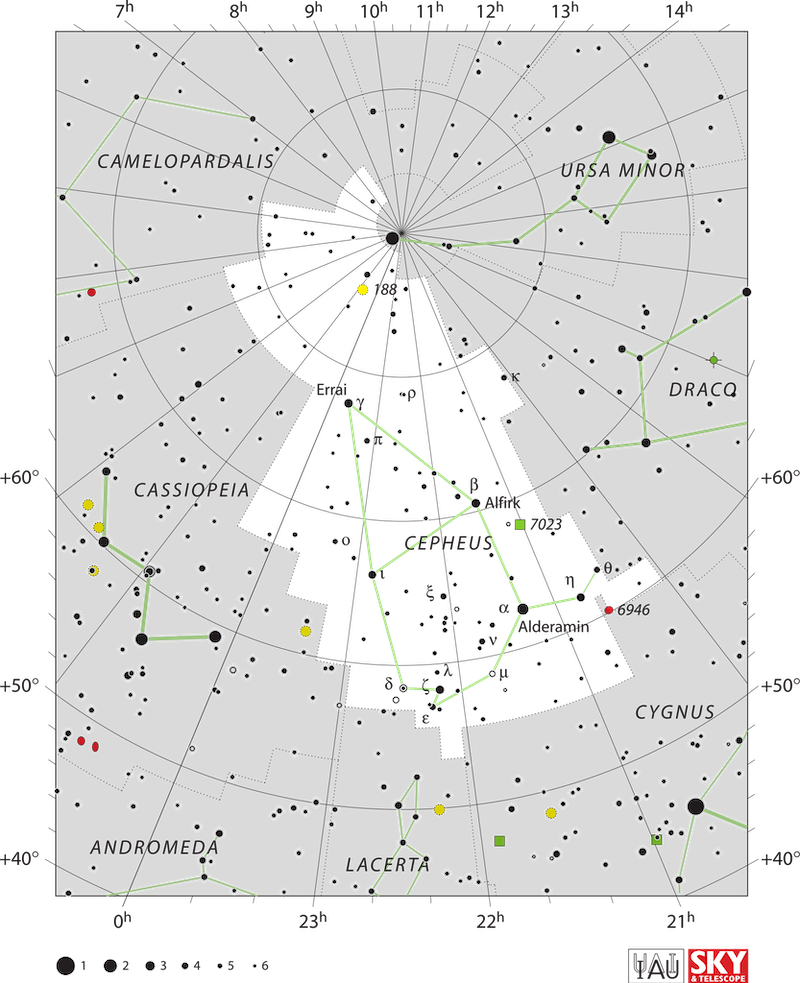
How to spot Delta Cephei in the night sky
The original Cepheid, Delta Cephei, is circumpolar – always above the horizon – in the northern half of the United States (north of about 40 degrees north latitude).
Even so, Delta Cephei is much easier to see when it’s high in the northern sky on autumn and winter evenings. If you’re far enough north, you can find the constellation Cepheus by way of the Big Dipper. First, use the Big Dipper “pointer stars” to locate Polaris, the North Star. Then jump beyond Polaris by a fist-width to land on Cepheus.
You’ll see the constellation Cepheus the King close to his wife, Cassiopeia the Queen, her signature W or M-shaped figure of stars making her the flashier of the two constellations. They’re high in your northern sky on November and December evenings.
Charts for Delta Cephei
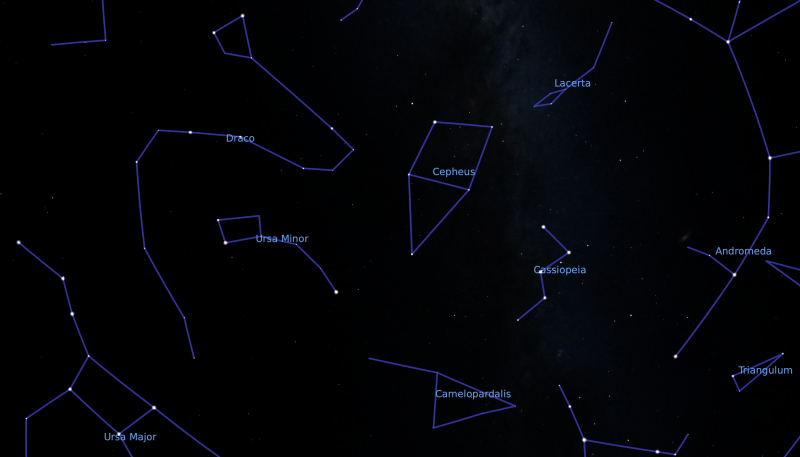
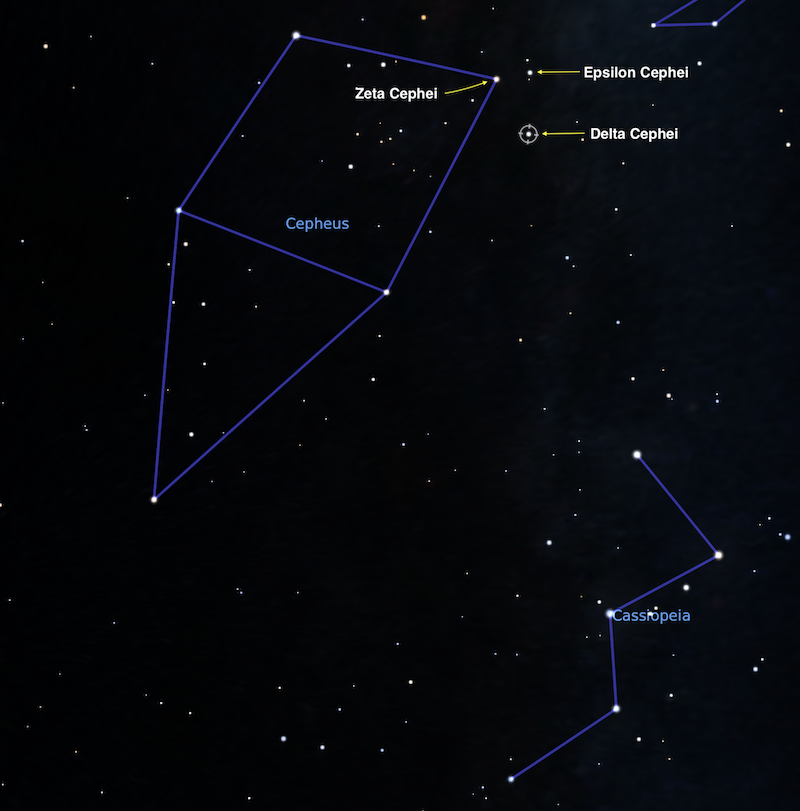
How to watch Delta Cephei vary in brightness
So the real answer to that question is: time and patience. But two stars lodging near Delta Cephei on the sky’s dome – Epsilon Cephei and Zeta Cephei – match the low and high ends of Delta Cephei’s brightness scale. So, those two stars should help you watch Delta Cephei change.
So look at the charts above, and locate the stars Epsilon and Zeta Cephei. At its faintest, Delta Cephei is as dim as the fainter star, Epsilon Cephei. At its brightest, Delta Cephei matches the brightness of the brighter star, Zeta Cephei.
Have fun!
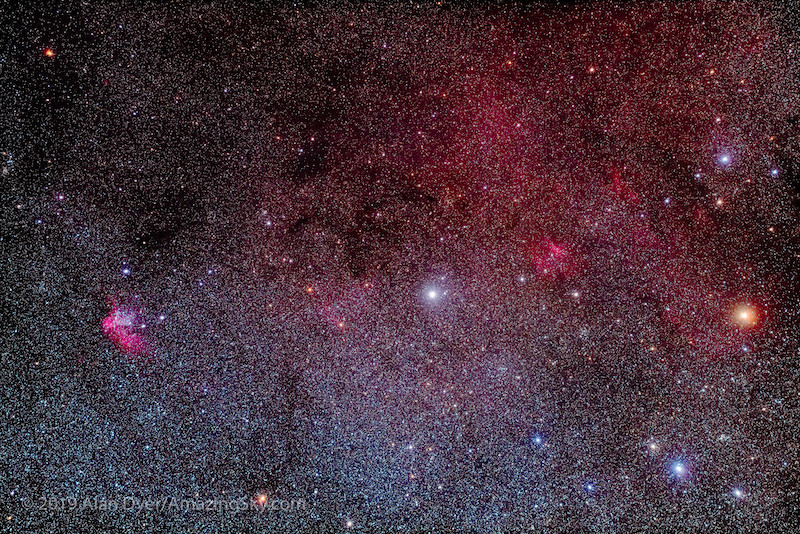
Delta Cephei a stunning binary star 887 light years distant. #Astrophotography #stargazing pic.twitter.com/lhVQjw9RMM
— Scott MacNeill (@scottiemacneill) January 16, 2016
Bottom line: Delta Cephei is an inconspicuous variable star in the northern constellation Cepheus the King. It’s the prototype for Cepheid variable stars that helped establish the distance scale of the universe. Their brightness pulsation rate correlates to their intrinsic brightness. So we can see how bright they look, and determine their distance.


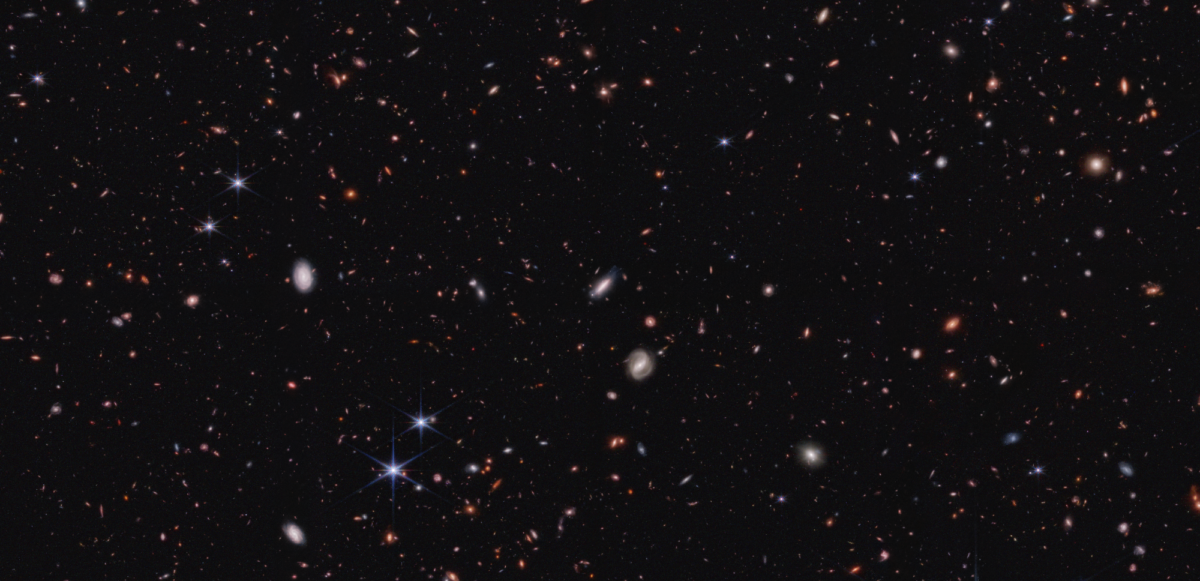


No comments! Be the first commenter?